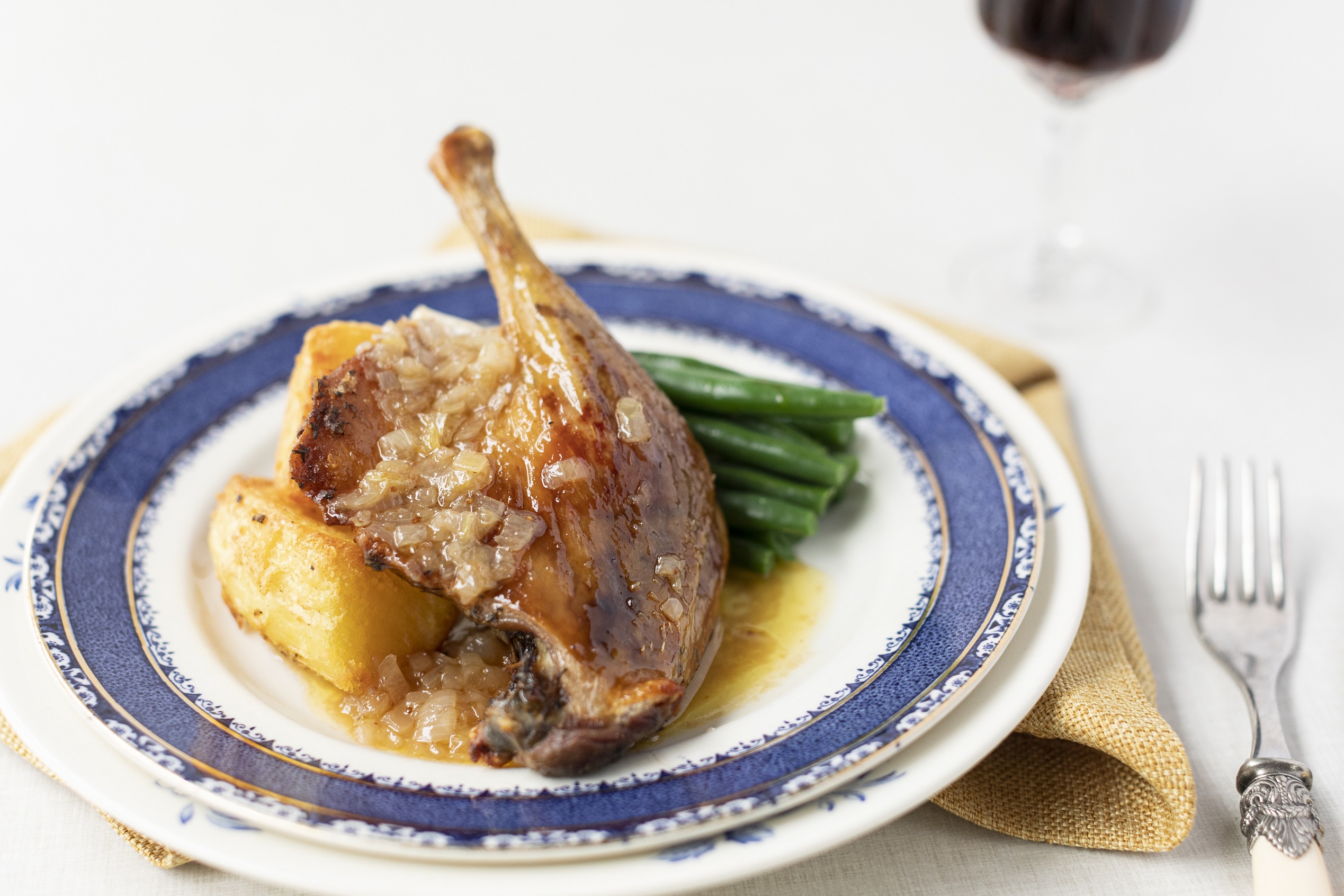Confit de canard, or duck confit, is one of the most celebrated dishes in French cuisine, particularly renowned in the Gascony region. This age-old technique involves slowly cooking duck in its own fat, resulting in tender meat and crispy skin. Originally developed for preservation purposes, confit de canard has evolved into a luxurious staple of French dining, offering a deep, rich flavor that is both rustic and refined.
Ingredients: Key Components for Authenticity

The simplicity of the ingredients in confit de canard belies the complexity of its flavors:
- Duck legs: Typically, four duck legs are used, known for their rich, fatty qualities.
- Duck fat: Enough to completely submerge the duck legs during cooking.
- Garlic: Minced or whole cloves for a subtle pungency.
- Salt: Crucial for curing the duck prior to cooking.
- Fresh herbs: Traditionally, thyme and bay leaves are used.
- Black pepper: For seasoning.
Preparation: Detailed Cooking Process
- Curing the Duck: Begin by generously salting the duck legs, along with minced garlic and some freshly ground black pepper. Add fresh thyme and bay leaves to the mix. Cover and refrigerate for up to 36 hours. This step is essential for flavor development and preservation.
- Rinsing and Drying: Wash off the cure with cold water and thoroughly pat the duck dry. This ensures that the skin will crisp up during cooking.
- Cooking the Duck: Preheat your oven to a low 275°F (135°C). Place the duck legs in a deep baking dish and cover them entirely with melted duck fat. Cook slowly in the oven for 2-3 hours until the meat is incredibly tender and pulls away from the bone easily.
- Finishing with a Crisp: For a crispy finish, increase the oven temperature to 400°F (200°C) and cook the duck for an additional 10-15 minutes until the skin is golden and crisp.
Culinary Techniques and Variations
- Alternative Fats: While duck fat is traditional, goose fat can also be used as a substitute, offering a slightly different flavor profile.
- Serving Suggestions: Confit de Canard can be served with a variety of sides such as roasted potatoes, braised red cabbage, or a simple green salad. It’s also commonly shredded and used in salads, pasta, or cassoulets.
- Preservation: Once cooked, Confit de Canard can be stored in the refrigerator covered in fat for several weeks, which can further enhance its flavor.
Historical Significance and Modern Adaptations
The technique of Confit de Canard has been used for centuries as a method of preservation, long before the advent of refrigeration. In modern kitchens, while preservation is less of a concern, the technique is cherished for the unique texture and depth of flavor it imparts to the duck.
Conclusion: Mastering an Icon of French Cuisine
Mastering Confit de Canard at home allows you to tap into a rich vein of French culinary tradition. It’s a process that rewards nakbon patience and attention to detail with a dish that is both sumptuously rich and delightfully simple. Confit de Canard is more than just a meal; it’s a connection to history, a celebration of French culinary arts, and a testament to the technique that turns simple ingredients into something truly extraordinary.
